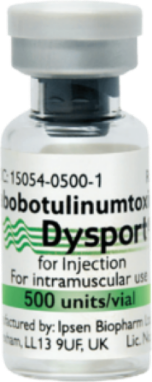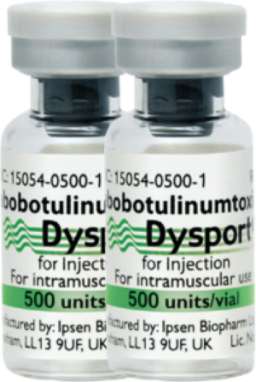Dysport® is a flexible treatment option for patients with cervical dystonia.1

Dosing and administration
Initial recommended dose: 500 U per patientGiven as a divided dose and administered into the two or three most active neck muscles. Initial dose equivalent to:
|
Subsequent dose: Up to 1000 U and no lower than 250 U*On subsequent administration, the doses may be adjusted according to the clinical response and side effects observed. Titration of dose to a
|
Figure adapted from Dysport® Summary of Product Characteristics.1
Cervical dystonia dilution table2
In the treatment of cervical dystonia, Dysport® is reconstituted with sodium chloride injection B.P. (0.9% w/v) to yield a solution containing 500 units per ml of Dysport®.2
| Volume Injected (ml) | Volume of injectable NaCl solution (0.9%) used to reconstitute a vial of Dysport® 500 U | ||
|---|---|---|---|
| 1ml | |||
| Dysport® units delivered | |||
| 0.1 | 50 | ||
| 0.2 | 100 | ||
| 0.3 | 150 | ||
| 0.4 | 200 | ||
| 0.5 | 250 | ||
| 0.6 | 300 | ||
| 0.7 | 350 | ||
| 0.8 | 400 | ||
| 0.9 | 450 | ||
| 1.0 | 500 | ||
The dosing recommendations in the Dysport® SmPC should always be followed.1 Dysport® should only be administered by an appropriately qualified healthcare professional.1 The relief of cervical dystonia symptoms may be expected within a week of the injection. Injections may be repeated approximately every 16 weeks, or as required to maintain a response, but not more frequently than every 12 weeks.1
*Higher doses may be accompanied by an increase in side effects, particularly dysphagia.1
References:
- Dysport® Summary of Product Characteristics.
- Dysport® dosing and administration guide.
Abbreviations:
SmPC, Summary of Product Characteristics; U, units.
For further information, please refer to the Prescribing Information or the Summary of Product Characteristics.




